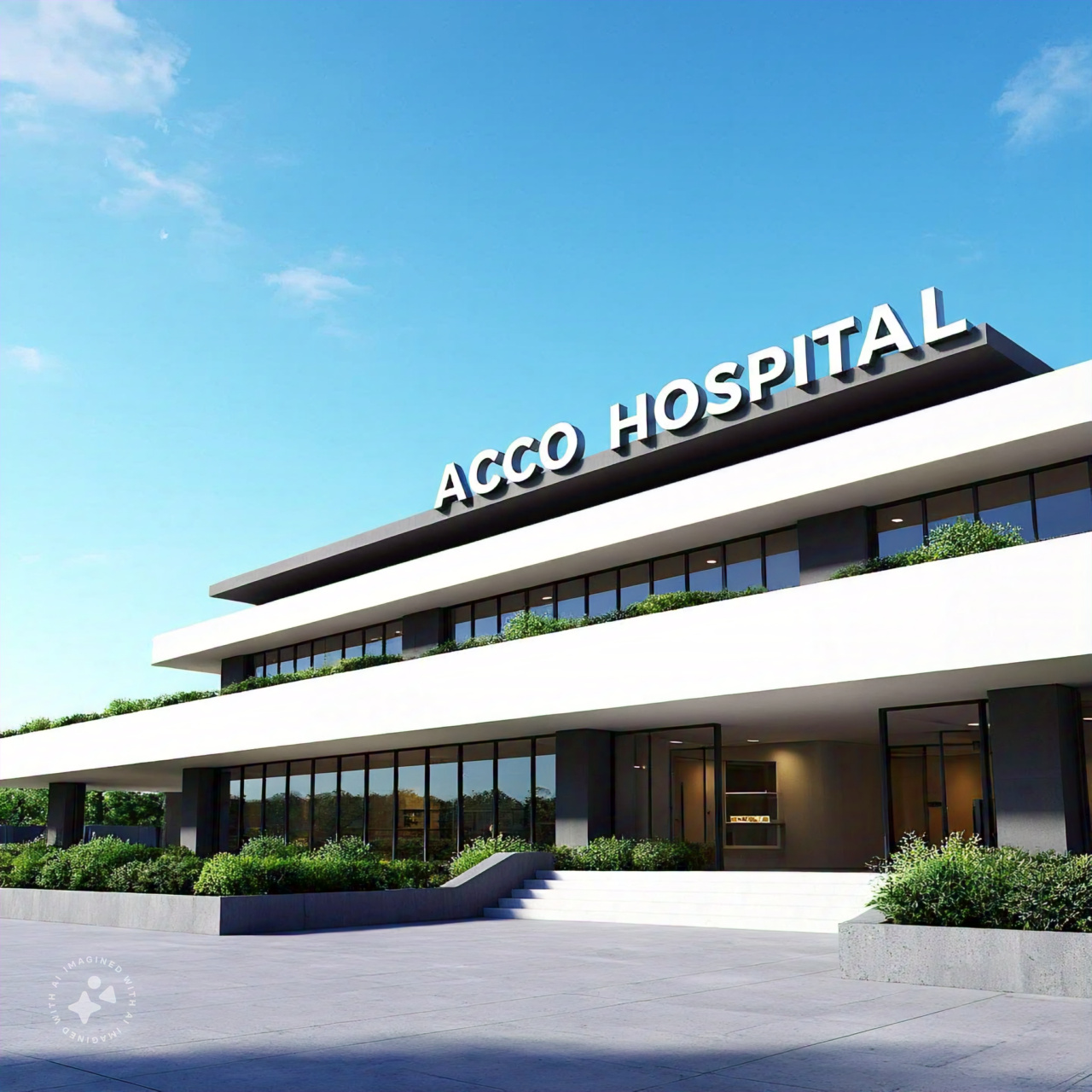
10 Smart Architecture Designs for Modern Healthcare in Pakistan
10 Smart Architecture Designs for Modern Healthcare in Pakistan


🏥 10 Smart Architecture Designs for Modern Healthcare in Pakistan
ACCO Construction – Leading Healthcare Architects & Consultants
The architecture of healthcare facilities in Pakistan is undergoing a transformative shift, focusing not just on functionality, but on efficiency, patient experience, technology integration, and sustainability. At ACCO Construction, we’re at the forefront of this evolution, delivering smart hospital architecture tailored to Pakistan’s unique healthcare needs.
In this article, we explore the 10 most innovative smart architectural design features shaping the future of hospitals, clinics, and healthcare centers in Pakistan.
🧠 1. Modular & Prefabricated Structures
Speed | Flexibility | Cost-Effective
Modular construction offers faster deployment, reduced construction waste, and scalable design—ideal for rural clinics, COVID-19 isolation centers, and private healthcare chains in Pakistan.
✔️ Reduced build time by 30-50%
✔️ Ideal for remote and underserved areas
✔️ Easily expandable in the future
🔗 Learn more: Modular Hospital Design in Pakistan
🌬️ 2. HVAC Zoning & Air Pressure Management
Infection Control | Patient Safety
Smart hospitals use differential pressure HVAC systems to control air movement:
-
🛑 Negative pressure rooms for isolation wards (COVID, TB)
-
✅ Positive pressure rooms for ICUs & operation theatres
-
💨 Constant fresh air exchange
This is essential for infection prevention, especially in surgical units and ICUs.
🧬 3. Data-Driven Layout Optimization
Efficiency | Navigation | Zoning
Using hospital simulation software, we design layouts that reduce travel distances for doctors/nurses and separate clean vs dirty flows:
✔️ Direct access from emergency to OR
✔️ Separate elevators for staff, patients, and waste
✔️ Nurse station visibility across multiple rooms
🖥️ 4. Smart Integration of EMR & IoT
Digital Health | Real-time Monitoring
Modern healthcare facilities in Pakistan are integrating:
-
📲 Electronic Medical Records (EMR)
-
🖥️ Patient Monitoring Systems
-
🔌 IoT-based equipment usage tracking
-
📡 Telemedicine suites
Smart wards improve patient safety, reduce errors, and enable remote diagnostics.
🌿 5. Sustainable & Green Hospital Design
LEED | Energy Efficiency | Wellness Focus
We apply LEED principles and eco-conscious materials in our hospital designs:
-
🌞 Solar energy systems
-
💧 Water recycling & grey water reuse
-
🌱 Natural ventilation and daylighting
-
🚯 Low-VOC paints and antibacterial finishes
🔗 Learn more: Green Hospital Design Pakistan
🏥 6. Evidence-Based Design for Healing
Patient-Centered | Stress Reduction
We incorporate psychological and physical healing elements:
-
🌳 Courtyards and green spaces
-
🖼️ Artwork and color therapy in wards
-
🪟 Daylight access in patient rooms
-
🔇 Noise control and acoustic zoning
These reduce stress and improve recovery outcomes in patients.
🛠️ 7. Flexible and Adaptive Interior Spaces
Future-Proof | Cost-Saving
Instead of rigid partitions, we design reconfigurable healthcare interiors that allow:
✔️ Fast layout changes (e.g., OPD to vaccination center)
✔️ Movable walls and modular utilities
✔️ Expansion-ready departments
Ideal for dynamic health scenarios like pandemics or seasonal outbreaks.
🧯 8. Integrated Safety and Fire Protection Systems
Life Safety | Compliance
Smart healthcare design includes:
-
🚨 Smoke detectors with alert systems
-
🔥 Sprinkler networks with heat sensors
-
🧯 Fire-rated doors and escape routes
-
🧭 Evacuation wayfinding lights
ACCO ensures full compliance with Pakistan Building Codes, PMC, and international NFPA standards.
🏪 9. Specialized Clinical Zoning
Streamlined Workflows | Infection Prevention
We zone spaces according to clinical use, ensuring:
-
OPDs, diagnostics, IPD, OT all flow logically
-
Dedicated sterile corridors for surgery
-
Separate visitor and staff entry points
-
Medical waste movement is never mixed with patient areas
🏗️ 10. Smart Vertical Design for Urban Clinics
Space-Saving | Vertical Hospitals
In DHA Lahore and other urban centers, land costs are high. We provide smart vertical layouts for:
-
Clinics with vertical zoning (Basement for diagnostics, Ground for OPD, Upper for IPD)
-
Rooftop helipads or solar farms
-
Stacked circulation cores with separate patient/staff elevators
🏥 ACCO Construction – Leading Hospital Architects in Pakistan
✅ 20+ Years of Experience
✅ Projects Delivered in DHA Lahore, Islamabad, Karachi & Multan
✅ Certified by Pakistan Engineering Council (PEC) & PMC
✅ Experts in Turnkey Hospital Construction & Smart Clinic Design
🏆 Notable ACCO Healthcare Projects
| Project | Location | Key Features |
|---|---|---|
| DHA Medical Center | Lahore | 100-bed hospital with negative pressure isolation |
| Sunrise Clinic | Islamabad | Prefab clinic with smart zoning |
| Noor Maternity | Multan | Solar-powered 24/7 OPD center |
| Smile Dental | Karachi | Modern ergonomic smart dental layout |
📍 Our Services Include:
-
Hospital Architecture & Planning
-
Clinic Interior Design
-
Healthcare MEP & HVAC Design
-
Prefabricated Clinics
-
Smart ICU/OT Setup
-
Green Building Certification Support
🔗 Internal Links:
🔗 External Links:
📞 Contact Pakistan’s Leading Healthcare Architects – ACCO Construction
📍 Office: Office 2, 3rd Floor, Big City Plaza, Gulberg-III, Lahore
📞 Phone/WhatsApp: 0322-8000190
📧 Email: info@acco.com.pk
🌐 Website: www.acco.com.pk
Let us help you design a smart, future-ready, and patient-centered healthcare facility anywhere in Pakistan.




